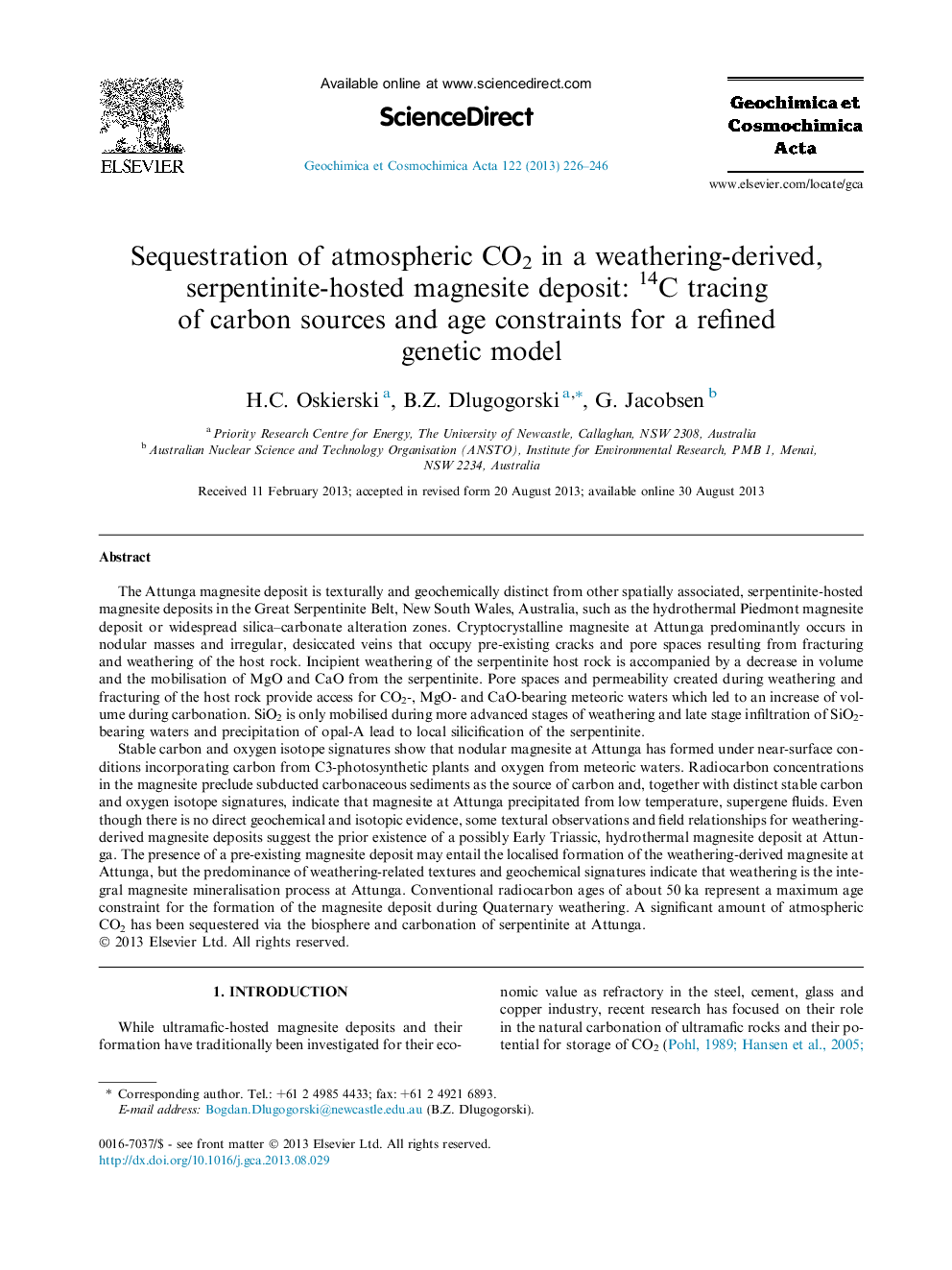| Article ID | Journal | Published Year | Pages | File Type |
|---|---|---|---|---|
| 6438819 | Geochimica et Cosmochimica Acta | 2013 | 21 Pages |
Abstract
Stable carbon and oxygen isotope signatures show that nodular magnesite at Attunga has formed under near-surface conditions incorporating carbon from C3-photosynthetic plants and oxygen from meteoric waters. Radiocarbon concentrations in the magnesite preclude subducted carbonaceous sediments as the source of carbon and, together with distinct stable carbon and oxygen isotope signatures, indicate that magnesite at Attunga precipitated from low temperature, supergene fluids. Even though there is no direct geochemical and isotopic evidence, some textural observations and field relationships for weathering-derived magnesite deposits suggest the prior existence of a possibly Early Triassic, hydrothermal magnesite deposit at Attunga. The presence of a pre-existing magnesite deposit may entail the localised formation of the weathering-derived magnesite at Attunga, but the predominance of weathering-related textures and geochemical signatures indicate that weathering is the integral magnesite mineralisation process at Attunga. Conventional radiocarbon ages of about 50Â ka represent a maximum age constraint for the formation of the magnesite deposit during Quaternary weathering. A significant amount of atmospheric CO2 has been sequestered via the biosphere and carbonation of serpentinite at Attunga.
Related Topics
Physical Sciences and Engineering
Earth and Planetary Sciences
Geochemistry and Petrology
Authors
H.C. Oskierski, B.Z. Dlugogorski, G. Jacobsen,
